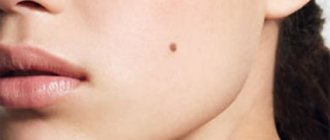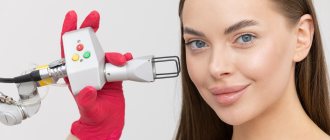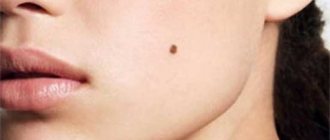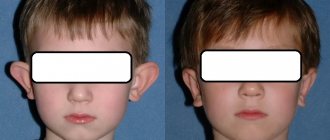Wound Dressing Technique: 5 Basic Steps
- Prepare the necessary materials . Before starting the procedure, the first aid kit must be fully equipped: contain bandages, plasters, antiseptics, sterile gloves and other items prescribed by the doctor. It is also necessary to disinfect the surfaces on which the products for the procedure will be laid out during the process.
- Remove the old bandage . With one gloved hand you need to hold the skin around the wound, and with the other, carefully remove the gauze. If the bandage is dry, it should first be soaked with a solution of furatsilin or hydrogen peroxide. Used materials must be placed in a bag.
- Treat the wound . Remains of gauze, bandages, cotton wool, threads should be removed from the wound, and then purulent discharge should be removed. If bleeding resumes, apply a gauze pad to the wound and hold for at least five minutes. Then rinse the surface with hydrogen peroxide. If bleeding reoccurs after one or two dressing changes, you should consult a doctor.
- Apply a new dressing to a clean, dry, exposed area . It is pre-impregnated with antibacterial and wound-healing agents prescribed by the doctor.
- Secure the bandage . The bandage should prevent it from moving, but not put too much pressure on the damaged area.
During each procedure, it is necessary to check the damaged area for infections. Signs of infection are: severe suppuration, unpleasant odor, discoloration. If any of the symptoms are present, you should seek medical help. The doctor will prescribe antibiotics or other medications to help get rid of the infection.
Wound healing
A wound is a violation of tissue integrity due to mechanical stress (cuts, abrasions, bruises, bites). After damage, the body mobilizes forces to start the healing process. It can take different times depending on the characteristics of the wound and the ability of the tissue to regenerate. With infectious complications, the process may be delayed. You can stimulate the healing process of wounds and reduce the risk of infection with the help of special preparations, for example, cream for external use Argosulfan®.
Stages of wound healing
The wound healing process consists of several stages:
- Inflammation is a typical local reaction of the body to tissue damage and encounters with foreign substances. Blood flow to the wound site increases, leukocytes produce substances that trigger the inflammatory process necessary to cleanse the wound. As a result, its characteristic symptoms appear: redness and swelling. To control the situation, the adrenal glands begin to intensively produce corticosteroids and adrenaline, which have anti-inflammatory activity. This stage takes on average 4 days;
- Regeneration (direct healing) is the next stage, it usually lasts from the 4th to the 10th day. The body produces substances that stimulate cell division and metabolic processes in them, due to which young tissue (granulations) is formed at the site of damage, filling the wound;
- Scarring and epithelization are the final stage of wound healing, lasting from several weeks to several months. The wound is healed with young connective tissue, blood vessels and nerves grow inside it, blood circulation and innervation are restored, and a layer of epithelium is formed on the surface. There is always a trace of damage left on the skin, a scar or scar, the size and shape of which depends on the characteristics of the wound. The longer healing continues, the more connective tissue is formed in the wound, forming a scar.
The duration of each stage may vary, depending on the body's ability to regenerate and the characteristics of the wound itself.
Types of wound healing
There are three types of wound healing:
- Primary is possible only for wounds with smooth edges that are in close contact with each other. They should be free of germs, dirt, hemorrhages, and dead tissue. These are only postoperative wounds and those treated by a surgeon on the first day after their application. They heal with the formation of thin, barely noticeable scars;
- Secondary healing occurs if primary healing is not possible. Uneven or non-viable wound edges, gaping, and infection cause suppuration. Only after cleansing the wound and completing the purulent inflammation does it heal with the formation of a scar, sometimes rough;
- Healing under the scab is typical for superficial wounds. A scab is a crust formed from dried blood, lymph and intercellular fluid, released onto the surface of the wound when the skin is damaged. The scab protects the wound from infection and mechanical damage, and underneath it the wound heals quickly. There is no need to remove the crust unless there is suppuration underneath it - if events progress well, it will go away on its own.
Factors influencing the wound healing process
Reasons that slow down wound healing related to the condition of the whole organism:
- Age: the ability to regenerate tissue in older people is extremely low, so their wounds take longer to heal than in middle-aged patients and, even more so, in children;
- state of immunity: with congenital or acquired deficiency of the immune system, the body’s defenses are reduced, it takes more time to cope with foreign agents. The inflammatory stage is prolonged, infectious complications often develop, further increasing the duration of healing;
- Chronic diseases: with long-term illnesses, the body spends a lot of energy fighting them, so there are simply no resources left for healing wounds;
- Diabetes mellitus: glucose, which is too much in the blood during this disease, damages blood vessels, disrupting blood supply, tissue trophism and their ability to regenerate;
- Poor nutrition: If the body does not receive enough nutrients, wounds take longer to heal. First of all, this concerns proteins - they form substances involved in inflammation and new cells that restore tissue integrity.
Local causes affecting wound healing:
- Significant contamination of the wound and foreign bodies in it increase the duration of the inflammatory stage;
- Lack of primary wound treatment is the main cause of infectious complications;
- The location of the wound at the bend site, constant movements of its edges make regeneration and epithelization difficult
Basic rules for treating wounds
If the wound is properly treated immediately, the risk of infectious complications is significantly reduced, which means healing will take less time. It is important to remove dirt and foreign objects (splinters, rust, glass) from the wound surface, and then rinse it with antiseptic agents. After this, you can apply a bandage with an antibacterial agent.
Only superficial wounds can be treated on your own; in other cases, you need to consult a surgeon. To speed up wound healing, after treatment, local agents are used that stimulate cell division and prevent the development of infectious complications. An example of a drug that meets all these requirements is Argosulfan® cream for external use.
Argosulfan® for wound treatment
Argosulfan® cream is a local antibacterial drug with regenerating and antimicrobial properties. Its main component is silver sulfathiazole, which has a wide spectrum of antibacterial action against gram-positive and gram-negative bacteria. It dissolves slowly, due to which the concentration of active substances on the surface of the wound remains high for a long time.
Upon contact with skin, silver sulfathiazole breaks down into sulfathiazole and silver ions, both components fight microbes. Sulfathiazole prevents their growth and reproduction, and silver destroys them by destroying the shells. These substances stimulate tissue regeneration, wound healing, and reduce the risk of severe scar formation*.
Argosulfan® can be used to treat both dry, contracted and weeping purulent wounds. It can be applied openly or under a bandage: 2-3 times a day in a thick layer (2-3 mm). By keeping the surface of the wound moisturized, the cream makes dressings less painful. It is recommended to use the drug until the wound is completely healed, but not longer than 60 days.
Advertisement RUS-DRM-ARG-NON-08-2018-1265
* E.I. Tretkova, Complex treatment of long-term non-healing wounds of various etiologies, Clinical Dermatology and Venereology, 3 2013
Products and dressings for the treatment of chronic wounds
The course of therapy is selected by the attending physician; you should not self-medicate - this can lead to a worsening of the situation.
Gels and solutions for rinsing and cleansing
- Gels fill subcutaneous pockets and cavities, providing an antimicrobial effect (Prontosan gel), cleanse necrotic masses (Askina gel, Hydrosorb gel), form an optimal environment for healing (Purilon gel), and work as an anti-inflammatory antimicrobial agent (Emalan collagen hydrogel).
- Prontosan sterile solution is suitable for preventing infections, cleaning and moisturizing wounds, helping in tissue regeneration and suppressing pathogenic microflora.
What and when to eat
During the rehabilitation period, food should be soft, mostly liquid, and have a comfortable temperature. How much you can’t eat after tooth extraction depends on whether there is heavy bleeding or not. If blood clotting is normal, then a protective clot is formed and securely attached within 2 to 3 hours. After this, the restriction is lifted. With complex extraction, the time can increase to 4.6 hours.
It is advisable to exclude spicy, sweet foods, carbonated drinks, alcohol, raw vegetables, fruits with a high acid content. Chewing is carried out on the opposite side of the jaw. It is better not to eat rough, hard food, as you may accidentally touch the wound.
HOW TO ACCELERATE SUCH HEALING AFTER SURGERY?
To quickly heal the postoperative suture, it is necessary to use wound healing ointments.
These include levomekol, ichthyol ointment, solcoseryl, bepanthen and others.
Levomekol has antibacterial properties and causes accelerated regenerative ability of cellular elements. The ointment is applied to a cotton swab or ball and the seam is treated. Duration of use is 5-7 days.
Use is contraindicated for dermatological diseases (psoriasis, various skin rashes), and for intolerance to the main component – methyluracil.
Ichthyol ointment has anti-inflammatory and antiseptic properties. It must be applied in a thin layer to the damaged area. Apply a sterile bandage and bandage on top.
Solcoseryl is used to activate fibroblasts. It improves metabolic processes in connective tissue elements. Apply a thin layer to the disinfected wound surface.
Do not use if you are hypersensitive to para-aminobenzoic acid.
General recommendations
Extirpation ends by placing a cotton swab on the operated area. If the bleeding is minor, it can be removed after a few minutes. In case of increased bleeding, it is allowed to keep the cotton wool for up to half an hour; if the process continues, the doctor uses hemostatic drugs. When the cotton wool is held for too long, the blood clot may stick to it and fall out, and the socket with the bone will lose its natural protection from the external environment.
How to stop bleeding after tooth extraction at home:
- apply a special hemostatic sponge (sold in a pharmacy);
- make a tight swab from sterile gauze, apply to the hole and bite;
- if the problem is caused by increased blood pressure, then you need to take appropriate medications;
- use ice or frozen foods pre-wrapped in a towel as a cooling compress.
Smoking after tooth extraction is unacceptable, since cigarettes contain nicotine, which constricts blood vessels. As a result of this action, the cells do not receive the required amount of oxygen and nutrients, so the regeneration processes slow down, the risk of infection increases, scarring and improper tissue fusion are possible.
On the day of surgery, you should not rinse your mouth, engage in sports or other physical activity; it is best to go home from the clinic and rest. Routine oral hygiene or rinsing is not recommended.
In nutrition, preference should be given to soft, liquid and warm foods.
Pain relief after the procedure
- You may experience pain or discomfort after the procedure. To relieve these symptoms, take acetaminophen (Tylenol®) or strong acetaminophen (Extra Strength Tylenol®).
- Do not take aspirin or nonsteroidal anti-inflammatory drugs (NSAIDs) such as ibuprofen (Advil®) or naproxen (Aleve®). These medications make it harder for your blood to clot and may increase bleeding.
- Follow dosage directions on the package. If the recommended dosage does not relieve pain, call your doctor.
- If you are allergic to acetaminophen or have a medical condition that prevents you from taking it, ask your healthcare professional what medicine you can take instead.
- If you are participating in a clinical trial for cancer treatment, ask your oncologist (cancer treatment doctor) what pain medications you may take.
- You can also apply an ice pack to the wound to reduce pain, swelling, and bruising. Apply an ice pack to the wound for 15 to 20 minutes every hour or as directed by your healthcare professional.
to come back to the beginning
HOW TO REMOVE SEAMS?
At home, sutures after abdominal operations are prohibited from being removed. Sutures can be removed when suturing skin defects on the upper and lower extremities.
Rules and techniques for removing postoperative sutures
- It is necessary to prepare sterile instruments and disinfect your hands up to the elbow. Provide access to the seam.
- Using an antiseptic, treat the suture area with a cotton swab.
- Then, taking tweezers in your hand, slightly lift the first knot.
- Taking the scissors in your hand, cut the suture thread.
- Do this with all nodes.
- Make sure that all suture material is removed.
- Treat the area of the removed suture with an antiseptic solution.
- Apply an aseptic bandage.
How long does it take for a tooth to heal after extraction?
If the extirpation is successful and there is no bleeding, then on the second or third day the hole becomes covered with a grayish coating, and by the end of the week it becomes bright pink. When pressing on the gum, the exudate does not come out. The swelling completely subsides and the pain goes away. The processes of restoration of soft and bone tissues begin.
What not to do on the first day so as not to damage the formed clot:
- rinse your mouth intensively;
- lick the hole;
- blow your nose;
- spit;
- brush your teeth.
After two weeks, the mucous membrane acquires a healthy color, the hole is not visualized as a separate part, since by this time the epithelial layer is completely restored.
How long a wound heals after tooth extraction depends on the presence or absence of complications. If everything is in order, then after about a month the replacement of the void in the socket with bone and connective tissue is almost complete. We can talk about complete healing after 3 or 4 months. By this time, a smooth surface has formed in place of the removed dental unit, which does not in any way remind of the operation performed.
When to contact a healthcare professional:
Call your healthcare provider if you experience any of the following:
- temperature 100.4°F (38°C) or higher;
- chills (getting cold and shaking);
- any of the following symptoms in or around the wound: more redness or swelling, such as if the pink rim becomes wider than ¼ inch (6 mm);
- increasing pain or discomfort;
- skin that is hard, warm, or hot to the touch;
- bright yellow or green discharge;
- unpleasant odor;
- rash;
- blisters;
- drainage in an amount that saturates the bandage through and through;
- bleeding that does not stop after pressure has been applied to the wound area for 30 minutes;
to come back to the beginning
The effectiveness of ointments for postoperative sutures
The rate of healing of postoperative sutures is influenced by a number of factors:
- Age
. In younger patients, the healing process occurs at a faster pace. - Weight
. The presence of excess subcutaneous fat contributes to poor circulation, which leads to prolonged healing. - Diet
. Unbalanced nutrition and lack of fluid reduces the rate of tissue regeneration. - Immunity
. Disturbances in the functioning of the immune system negatively affect the healing process of postoperative wounds. - Level of blood circulation at the wound site
. Incisions located in areas with large concentrations of blood vessels heal faster. - Oxygen supply
. Tissue ischemia resulting from strong tightening of sutures, hypoxemia, low blood pressure or vascular insufficiency impairs the supply of oxygen to tissues and, as a result, prevents rapid wound healing. - Presence of chronic diseases
. Diseases of the endocrine system and diabetes mellitus have the worst effect on the healing of sutures and often contribute to the occurrence of complications. - Suppuration or secondary infection
. These problems lead to deterioration of the wound and inhibit the healing process. - Type of scar
. Normotrophic, atrophic, hypertrophic and keloid scars are distinguished. The scars of the first two groups heal the fastest.
With regular treatment, the healing time depends on the location of the wound:
- on the face – 3–5 days;
- on the stomach – 7–13 days;
- on the back – 10–20 days;
- on arms and legs – from 6 days.
The use of anti-inflammatory drugs in the first days after surgery, the use of steroid and corticosteroid drugs, chemotherapy or X-ray irradiation also significantly slow down the healing of sutures.
What medications are needed?
Antibiotics after tooth extraction are prescribed by the surgeon who performed the extraction. You can replace medications from the list with cheaper analogues, the main thing is that they have a wide range of applications, since there are different microorganisms in the mouth. Amoxiclav is often prescribed because it is effective and has a minimum of contraindications and side effects. The drugs are taken in the course determined by the doctor.
Anesthesia after tooth extraction lasts for several hours, after which pain appears, which can be eliminated with the help of analgesics. Anti-inflammatory drugs, for example Nimesil, and vitamins to strengthen the immune system can also be prescribed.
How to rinse your mouth after tooth extraction:
- chlorhexidine;
- a weak solution of potassium permanganate;
- furatsilin;
- miramistin;
- similar antiseptics.
In addition to pharmaceutical products, rinsing can be done with soda, saline solutions, decoctions of chamomile, sage, oak bark, calendula, and eucalyptus. They not only protect against infection, but also relieve swelling and accelerate tissue healing.
Temperature after tooth extraction is one of the possible symptoms, as tissues are injured and foreign elements penetrate the body. To improve your health, you need to take antipyretics.










